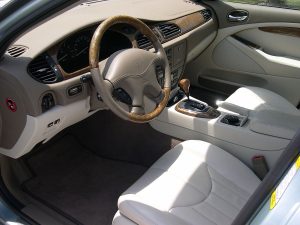
Came across this study today “Airborne Pathogens inside Automobiles for Domestic Use: Assessing In-Car Air Decontamination Devices Using Staphylococcus aureus as the Challenge Bacterium”. What struck me from the start was the Abstract which begins:
Family cars represent ∼74% of the yearly global output of motorized vehicles. With a life expectancy of ∼8 decades in many countries, the average person spends >100 min daily inside the confined and often shared space of the car, with exposure to a mix of potentially harmful microbes. Can commercial in-car microbial air decontamination devices mitigate the risk?
Okay. But wouldn’t assessing the risk be a better place to start? For example, most people commute by themselves (at least it appears that way when cruising along in the HOV lane past miles of traffic). Presumably they’re not at risk of getting re-infected from their own microbes? I suppose it’s a good point that if commercial microbial decontamination devices exist, their claims need to be validated. I guess I’m just questioning their existence in the first place. Full abstract below (closed access paper of course… why would anyone other than academics care about pathogens in cars. Oh wait).
Family cars represent ∼74% of the yearly global output of motorized vehicles. With a life expectancy of ∼8 decades in many countries, the average person spends >100 min daily inside the confined and often shared space of the car, with exposure to a mix of potentially harmful microbes. Can commercial in-car microbial air decontamination devices mitigate the risk? Three such devices (designated devices 1 to 3) with HEPA filters were tested in the modified passenger cabin (3.25 m3) of a four-door sedan housed within a biosafety level 3 containment facility. Staphylococcus aureus (ATCC 6538) was suspended in a soil load to simulate the presence of body fluids and aerosolized into the car’s cabin with a 6-jet Collison nebulizer. A muffin fan (80 mm by 80 mm, with an output of 0.17 m3/min) circulated the air inside. Plates (150 mm diameter) of Trypticase soy agar (TSA), placed inside a programmable slit-to-agar sampler, were held at 36 ± 1°C for 18 to 24 h and examined for CFU. The input dose of the test bacterium, its rate of biological decay, and the log10 reductions by the test devices were analyzed. The arbitrarily set performance criterion was the time in hours a device took for a 3-log10 reduction in the level of airborne challenge bacterium. On average, the level of S. aureus challenge in the air varied between 4.2 log10 CFU/m3 and 5.5 log10 CFU/m3, and its rate of biological decay was −0.0213 ± 0.0021 log10 CFU/m3/min. Devices 1 to 3 took 2.3, 1.5, and 9.7 h, respectively, to meet the performance criterion. While the experimental setup was tested using S. aureus as an archetypical airborne pathogen, it can be readily adapted to test other types of pathogens and technologies.
IMPORTANCE This study was designed to test the survival of airborne pathogens in the confined and shared space of a family automobile as well as to assess claims of devices marketed for in-car air decontamination. The basic experimental setup and the test protocols reported are versatile enough for work with all major types of airborne human pathogens and for testing a wide variety of air decontamination technologies. This study could also lay the foundation for a standardized test protocol for use by device makers as well as regulators for the registration of such devices.